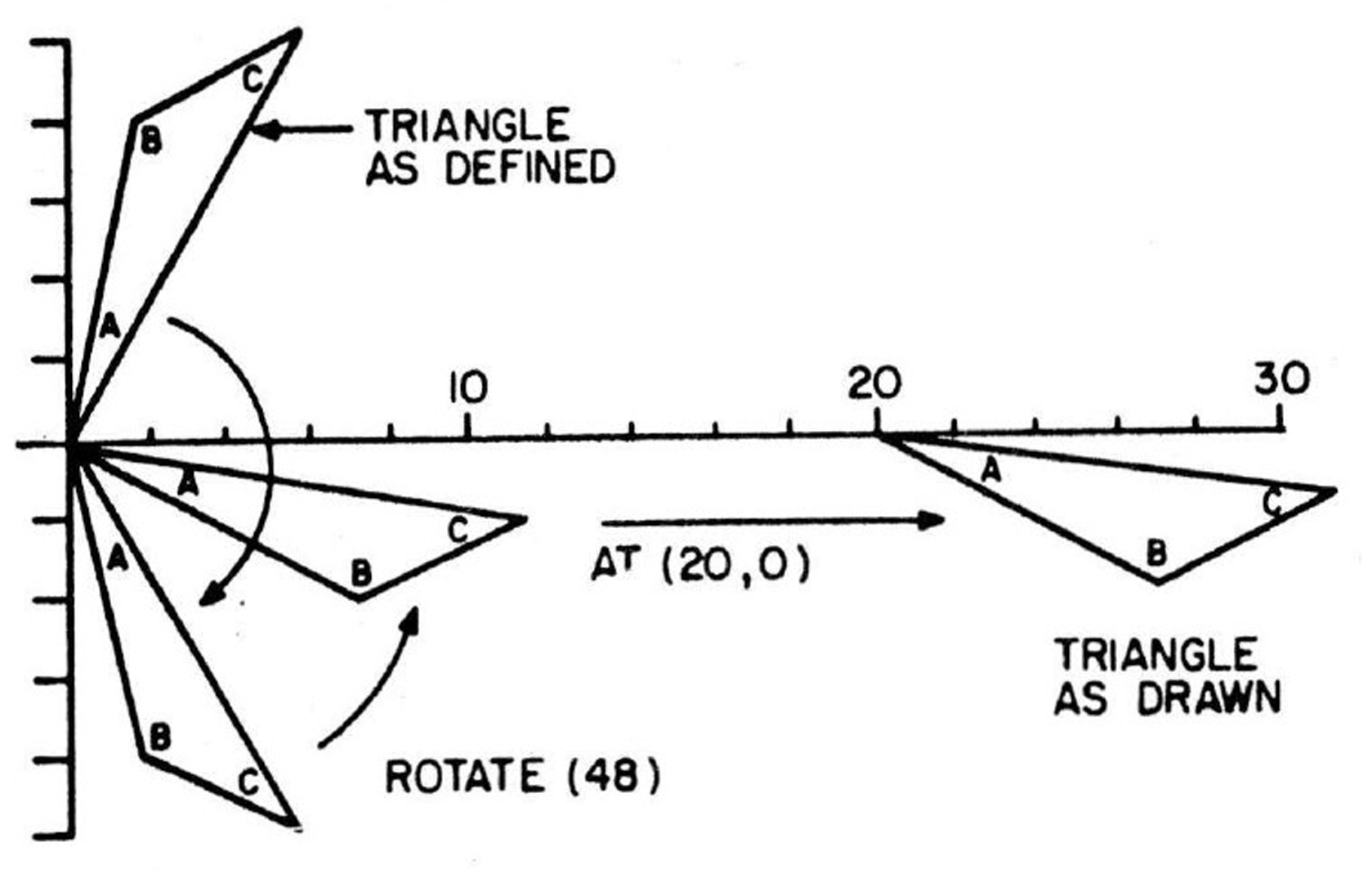“IMAGE: A Language for the Interactive Manipulation of a Graphics Environment” by O’Brien and Bown
Conference:
Type(s):
Title:
- IMAGE: A Language for the Interactive Manipulation of a Graphics Environment
Session/Category Title: Graphics Languages Session
Presenter(s)/Author(s):
Moderator(s):
Abstract:
This paper addresses itself to the problems involved in programming an interactive computer graphics display. A list of graphical programming facilities considered necessary for an interactive graphic programming language is presented. An examination of several application programs, written in a variety of existing languages, revealed that many of these facilities are usually lacking.
This paper presents the design of a new interactive graphics language ‘IMAGE’, developed specifically to satisfy the above criteria. The language places particular emphasis on providing a graphics application programmer the ability to program graphical interaction. The ‘IMAGE’ language utilizes the better features of several current graphic languages and combines these features with a unique interaction control structure. This OBJECT / ACTION control structure, the display picture description syntax and the hardware independent handling of input devices are the main features of the language, providing excellent graphical input response and drawing facilities. The device independent input / output structure permits the implementation of a portable language syntax, since there are no references to display hardware devices. All display references are performed through a virtual terminal. This paper contains a detailed description of the main features of the language and these features are illustrated in an example ‘IMAGE’ program.
References:
1. O’Brien, C. D., “IMAGE – a language for the Interactive Manipulation of A Graphics Environment”. M. Eng. Thesis, Carleton University, Ottawa, Canada, 1975.
2. Newman,W. F., -and Sproull, R. F., “Principles of Interactive Computer Graphics”, McGraw-Hill, New York, 1973
3. Maclean, M. A., “Designing a Language for Interactive Control Programs”, 2nd Man-Computer Communications Seminar, 31 May – 1 June, 1971, pp. 30-39.
4. Newman, W. M., “An Experimental Display Programming Language for the PDP-10 Computer”, University of Utah, UTEC-CSC-70-104, July, 1970.
5. Foley, J. D. and Wallace, V. L., “The Art of Natural Graphic Man-Machine Conversation”, Proc. of IEEE, Vol.62, No.4, April 74.
6. Woodsford, P. A., “GINO: Graphical Input/Output”, University of Cambridge Computer Aided Design Group, June 1969.
7. Hurwitz, A., Citron, J. P., and Yeaton, J. B., “GRAF – Graphical Extension to Fortran”, SJCC, 1967, Thompson Books, Wash. D.C., 553.
8. Newman, W. M., “Display Procedures”, CACM, Vol.14, No.10, Oct., 1971.
9. Newman, W. M., Gouraud, II., and Oestreicher, D. R., “A Programmer’s Guide to PDP-10 Euler”, University of Utah, UTEC-CSC-70-105,Jan, 1970.
10. Williams, D. L., “GRAPPLE – Graphics Application Programming Language”. NRC 3rd Man-Computer Communications Seminar, May, 1973.
11. Wirth, N., “A Generalization of Algol”, CACM, Vol 6, No.9, Sept., 1963.
12. Miller, E. F., “Extensions to Fortran to Support Structured Programming, (IFTRAN)”. Sigplan Notices, Vol.8, No.6, June. 1973, p. 63-64.
13. Bezanson, W. R, “Teaching Structured Programming in FORTRAN with IFTRAN”, Proc. of the 5th ACM SIGCSE symposium, Feb., 1975.
14. Miller, E. F., “Program Validation Project”, General Research Co., 1974




